Territory Monte Sant’Angelo
Palace Hotel San MicheleIn the heart of the Gargano National Park, Mattinata sits on two hillsides, surrounded by olive groves and forests, and bathed by the Adriatic Sea. This is a land of cliffs and orchids, with some 83 species of the splendid flower growing in the area.
Mattinata, which grew out of the ancient Roman city of Matinum, has a long history. Testifying to this are the archaeological artefacts on show at the Civic Museum, and the ruins of the Roman villas, necropolises, and abbeys that lie along the archaeological trekking routes that traverse the countryside.
The Rione Junno, the ancient heart of Mattinata, retains traces of the town's earliest dwellings. Known as “pagliai,” these were made out of rough-hewn stones wedged against each other. In among the Rione's lanes, you'll find stone stairways and small piazzas, as well as Palazzo Barretta and the elegant Palazzo Mantuano, seat of the town hall and library.
Following the coast towards Vieste, the Gargano reveals some of its most beautiful shorelines. Highlights include the Bay of Vignanotica, with its pebbly beaches and caves dug into the rocks, and the Bay of the Faraglioni, with its transparent waters and dunes coated with vegetation.
Source: www.santuariosanmichele.it - www.montesantangelo.com
What to do & see in Monte Sant’Angelo
A Territory to DiscoverAmong the main buildings, undoubtedly worth visiting, are the Basilica of San Michele Arcangelo, a UNESCO heritage site and the Norman Swabian Castle, but you will find much more to visit.
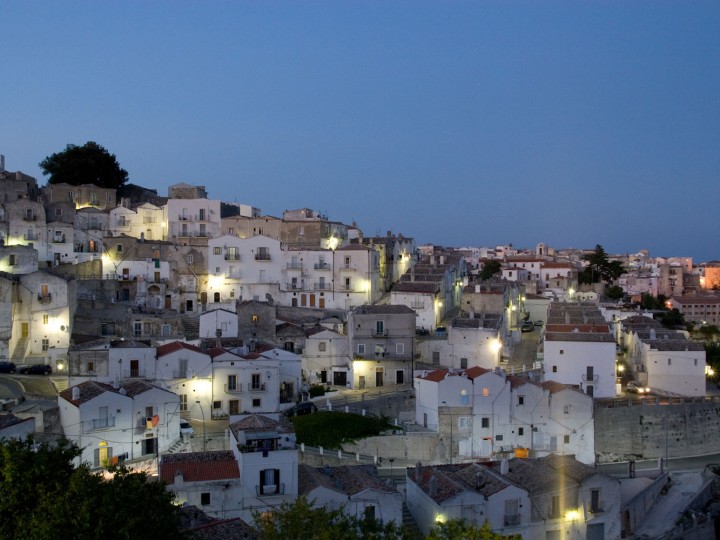
The story of Monte Sant’Angelo
The entire suggestion of its history merges with the consecration and events of a church dedicated in 493 - according to tradition - to the archangel Michael.
The first nucleus of the church was allegedly built by Lorenzo Maiorano, bishop of Siponto, in memory of his city's victorious resistance to a barbarian incursion, thanks to the apparition of the archangel Michael in a cave on the mountain. According to a more recent tradition, the church was built in the second half of the century. VI on an older Basilian abbey, as part of a political-religious reorganization of the Lombard duchy of Benevento, which made the church of S. Michele the national sanctuary of the Lombards of the Italian South.
From this period, therefore, it became the destination of an intense tradition of pilgrimages that has continued to this day.
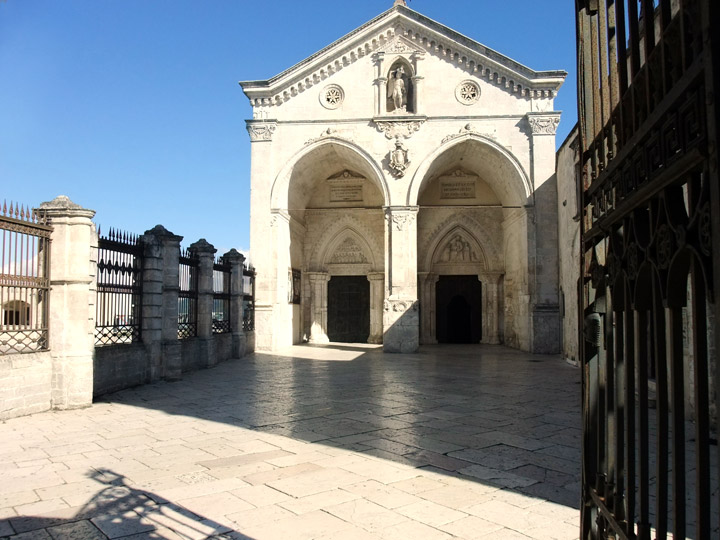
Basilica of San Michele Arcangelo (350 meters)
(UNESCO Heritage)
The Sanctuary of San Michele Arcangelo is on the Unesco World Heritage List and has welcomed uninterrupted pilgrimages from all over the world to Monte Sant'Angelo since the 5th century.
It is one of the most famous places sacred to the Archangel in the world, set on the route of the ancient Via Sacra Langobardorum. It stands on a hill, surrounded by the typical rugged and verdant landscape of the Gargano, where the white facade welcomes pilgrims with two large arches, surmounted by a niche with the statue of San Michele.
From the vestibule, you enter the 86-step staircase that leads to the Sacred Grotto, site of the apparitions of St. Michael and the heart of the sanctuary. Here we read an inscription with the words of the Archangel who eternally consecrated this mystical place: "Where the rock opens, there the sins of men will be forgiven".
The Baroque altar of the Blessed Sacrament and that of the Virgin are added to the magnificent high altar dominated by the marble statue depicting the Prince of the Celestial Militias.

Svevo Normanno Castle (150 meters)
The castle was the home of princes of the Honor Sancti Angeli lordship: it belonged to Rainulfo (count of Aversa) and then to Roberto il Guiscardo who, after having surrounded the city with walls, in the 11th century had the most ancient, the tower of the Giants, pentagonal in shape, 18 meters high and with 3 meters thick walls.
The structure became one of the three Castra exempta (privileged) in the defense of the Gargano. It hosted Frederick II of Swabia and his favorite, Countess Bianca Lancia of Turin, and for this reason it presents architectural works in the Frederick style, imposing, but refined as evidenced by the two-century roomsca del “Tesoro” con un pilastro centrale e volte ogivali.
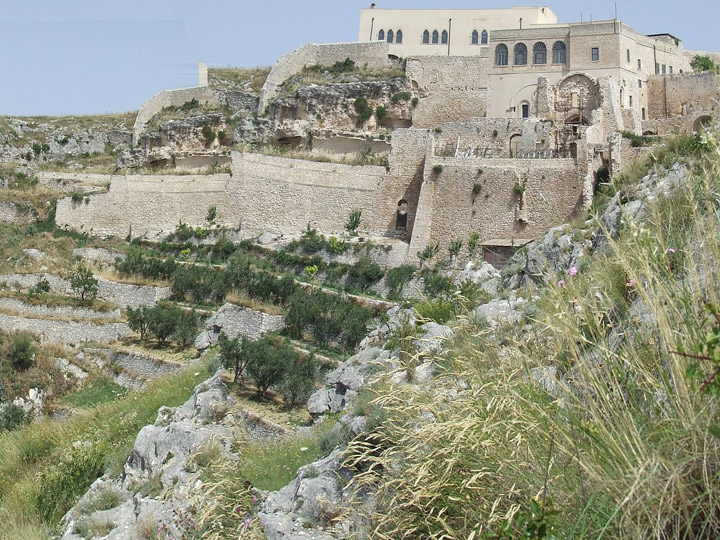
Pulsano Abbey (2 km)
The abbey of Santa Maria di Pulsano is a monastic complex located on the Gargano. Its hermitages are the place of the FAI heart. September 8 is the feast of the Madonna di Pulsano: the faithful depart from Monte Sant'Angelo and reach the abbey on the back of mules.
The monastery also has a guesthouse to accommodate a limited number of pilgrims for short retreat periods.
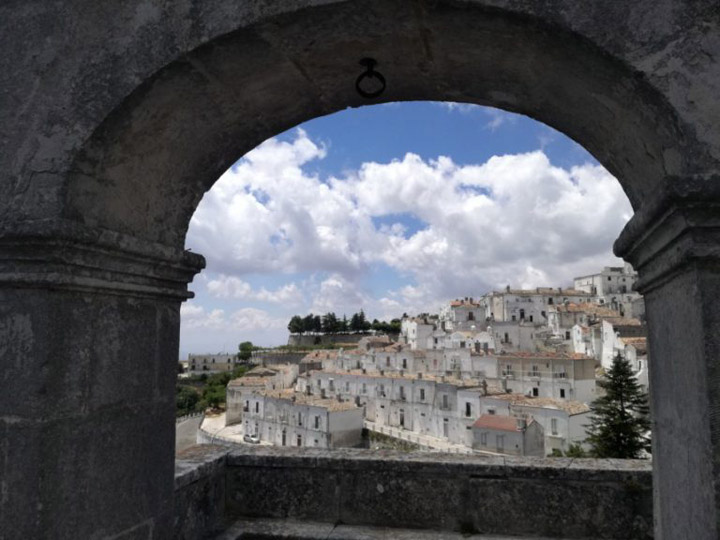
Rione Junno (700 meters)
Rione Junno is a millenary district, full of small terraced houses. The houses were born as a refuge for the pilgrims of San Michele and had a maximum size of 30 meters.
In the past they were inhabited by very large families, up to 10 people. All the houses were equipped with a tank system that collected rainwater, used for domestic use.
The Junno district is located in a strategic position for visiting the main attractions of Monte Sant’Angelo. Park the car and set off to discover.
The Basilica of San Michele, the Castle and the M.E.T.A. are just a few minutes away on foot.
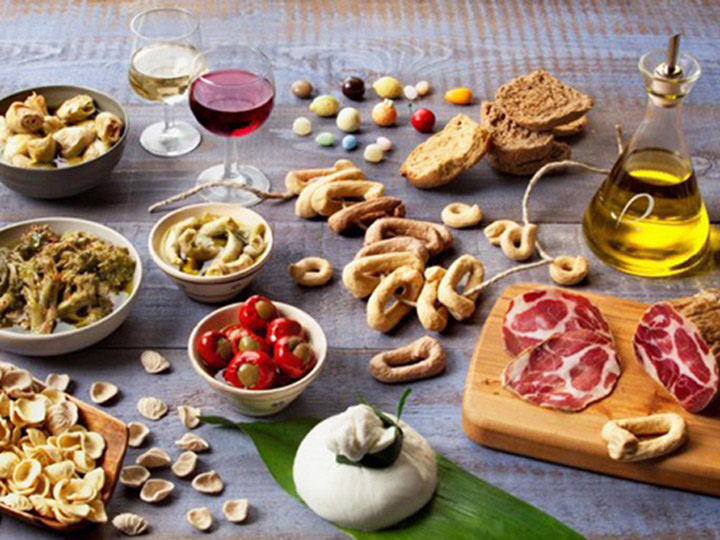
Traditional Local Specialities
Gargano is an extraordinary territory. It is really typical: it is kissed by the sun and wet by the Adriatic sea. This mix gives life to extraordinary typical specialties, that are well known and appreciated all over the world. Here there are some of these specialties thanks to which discover our land. Because to do this the eyes only are not enough... With the olive oil, the Gargano (and the whole Puglia) is well known due to the wines. The landscape it is indeed distinguished by the presence of olive oil trees and rows of grapevines that absorbe only the best from the land to give then life to grapes from which it is made an excellent wine, expression of our land's tastes.
